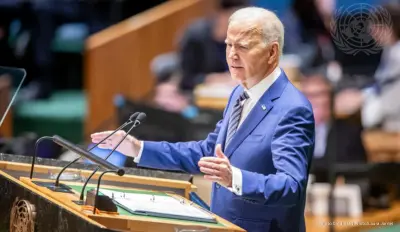India is aiming to urge developed nations to embrace a more ambitious target of becoming carbon negative rather than merely carbon neutral by 2050. This move is rooted in the argument that this approach would provide emerging economies with additional time to utilize fossil fuels to meet their developmental needs. Two sources within the Indian government revealed that India, which has been resisting calls to commit to a specific deadline for phasing out coal and other fossil fuels, plans to present this proposal at the COP28 climate summit in Dubai later this year.
“One of the government officials said, ‘The rich countries should become net negative emitters before 2050 to enable the world to achieve the target of global net-zero by that year while allowing developing nations to use the available natural resources for growth,'” according to one of the government officials.
As it currently stands, developed countries, including the United States, Britain, Canada, and Japan, are targeting achieving net zero emissions by 2050. China has committed to reaching net zero emissions by 2060, while India has set a target of achieving this goal by 2070. Net zero or carbon neutrality denotes a scenario in which the volume of carbon dioxide released into the atmosphere through human activities is offset by corresponding activities designed to remove an equivalent amount. In contrast, being carbon negative is a more ambitious undertaking that requires a nation to remove more carbon dioxide from the atmosphere than it emits.
The discussions at COP28 are unfolding against a backdrop of extreme weather events, such as heatwaves and unpredictable monsoons, which have underscored the urgency of taking immediate action on climate change.
 India, in its approach, intends to persist in resisting the pressure from developed economies to establish a concrete deadline for phasing down the use of fossil fuels. Instead, it is advocating for a shift in focus towards reducing overall carbon emissions through the use of “abatement and mitigation technologies.” These insights were provided by the two officials, and a third government official, who opted to remain anonymous as these discussions are confidential, and a definitive stance has not yet been established.
India, in its approach, intends to persist in resisting the pressure from developed economies to establish a concrete deadline for phasing down the use of fossil fuels. Instead, it is advocating for a shift in focus towards reducing overall carbon emissions through the use of “abatement and mitigation technologies.” These insights were provided by the two officials, and a third government official, who opted to remain anonymous as these discussions are confidential, and a definitive stance has not yet been established.
Efforts to obtain comments from India’s environment, external affairs, and prime minister’s offices through email inquiries were unsuccessful.
India has already committed to operating 50% of its installed power capacity using non-fossil energy sources and reducing its greenhouse emissions-to-GDP ratio to 45% of the 2005 level by 2030.
During a summit held in New Delhi just last month, the G20 countries acknowledged the necessity of reducing unabated coal power, although they did not specify a timeline or set emission reduction targets. This declaration marked a positive step in global climate negotiations, with these 20 nations, which collectively account for over 80% of global emissions, agreeing to phase out coal for the first time. This development was particularly notable as coal-dependent economies, including China, India, and Indonesia, have previously resisted discussions about transitioning away from coal and instead called for developed economies to cease using gas.
One official emphasized that it is currently unfeasible for India to commit to a timeline for ending coal usage, as coal is anticipated to remain a fundamental component of the country’s energy mix in the foreseeable future, even if energy storage and abatement technologies become viable in a hypothetical scenario.
Statistics reveal that thermal power stations continue to supply 73% of the electricity consumed in India, despite the country increasing its non-fossil energy capacity to constitute 44% of its total installed power generation capacity.
COP28 is scheduled to be held between November 30 and December 12, providing a significant platform for discussions on these crucial matters of global climate action.











